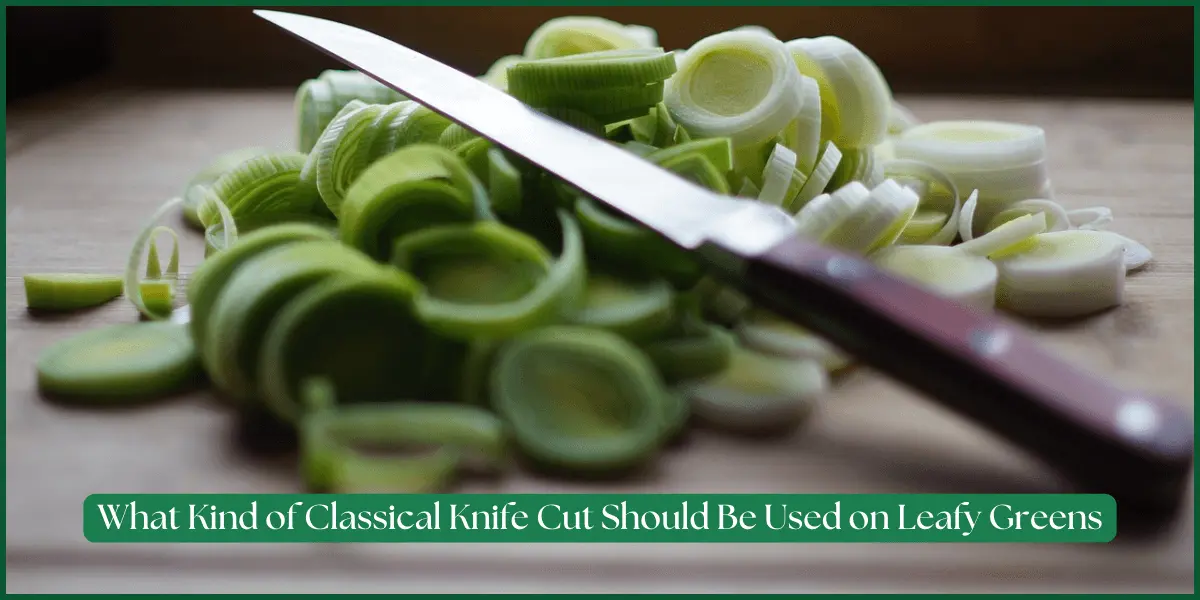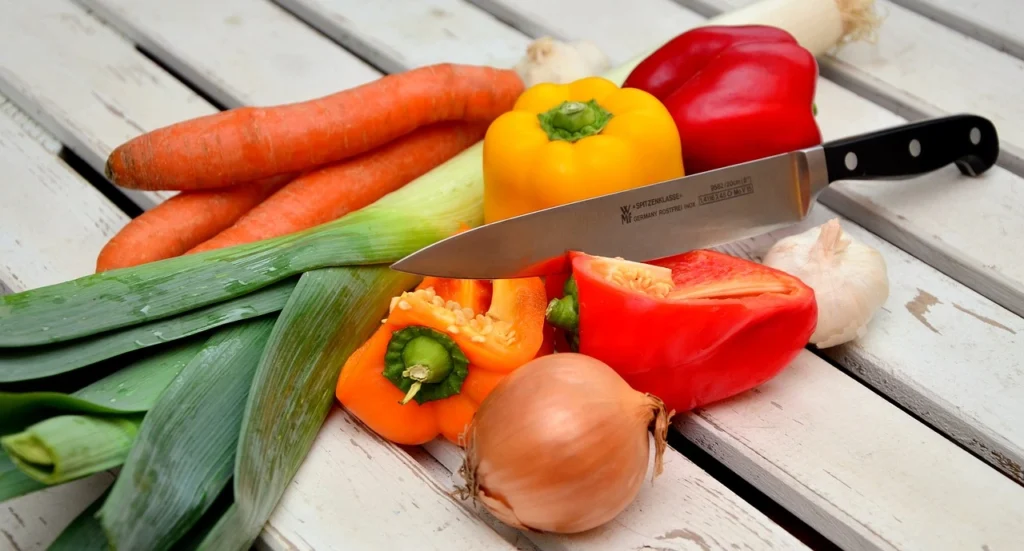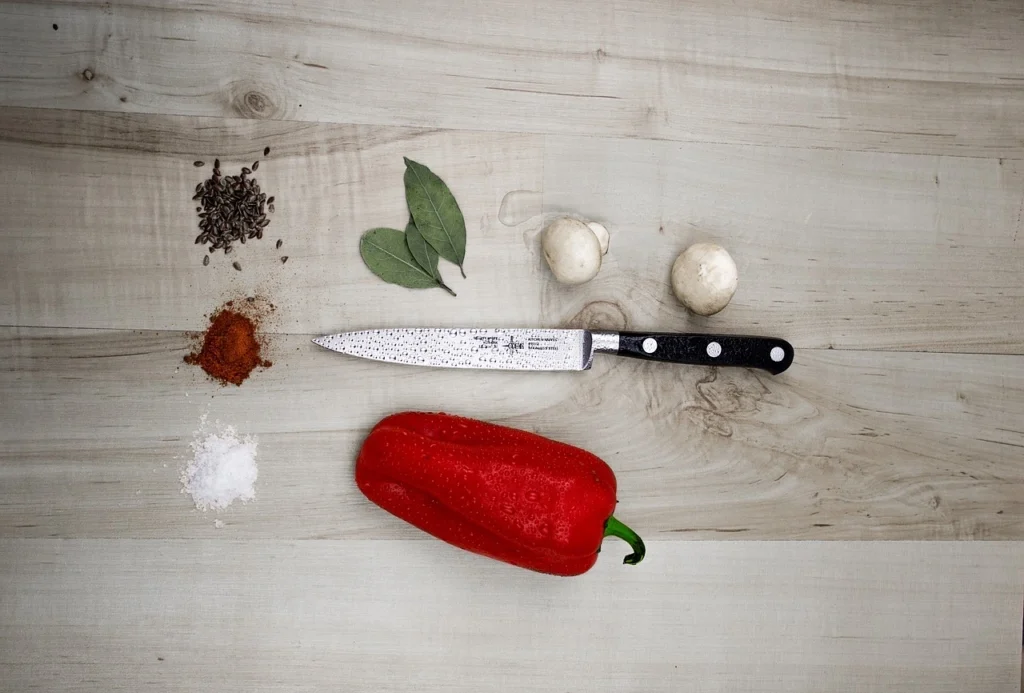
Mastering knife skills is one of the most crucial things about a person entering the food industry. Being aware of what kind of classical knife cut should be used on leafy vegetables makes for a great presentation and delicious flavour in your meals. So, let's look at the best classical cuts to use and some tips and techniques for cutting leafy greens with perfect precision.
There are different knife cuts used in the culinary world for various textures, flavours, and aesthetics like chef vs butcher knife. If you know the type of leafy vegetable to be used on a classical knife cut, you are going to be able to create visually pleasing dishes that are cooked very well and feature great flavours. Each cut is served to help the chef take control over how the flavours and textures combine.

What kind of Classical Knife Cut should be used on Leafy Vegetables?
For leafy greens, the ideal knife cut would be a fine slice or chiffonade. Chiffonade is a cut that yields ribbons and thus is great for garnishing, salads, or wherever some vegetation adds freshness and a splash of colour to the dishes.
What kind of classical knife cut should be used on leafy vegetables? The answer would probably be the chiffonade. It is a really old French cutting technique, in which you stack, roll, and slice leaves into very thin strips. Chiffonade is usually paired with basil, spinach, lettuce, or any other leafy green to present tender, ribbon-like cuts.
The chiffonade technique is best suited to be used on leafy greens because
Know the chiffonade cut one should use on the green-leaved vegetables. Here's how to do it according to step-by-step cuts to enhance your chef skills.
From this, you should get lovely delicate cuts every time. Chiffonade stands as a good answer for what kind of classical knife cut should be used on leafy vegetables.
While chiffonade is preferred, some classical cuts are acceptable based on the dish. Here's a look at some alternatives for what kind of classical knife cut should be used on leafy vegetables.
Another simple knife cut is the julienne, which tends to produce long thin slivers, almost matchstick-sized. This cut is more often used on firmer vegetables but can be perfectly applied to leafy greens-the application being most practical for salads or wraps. It does demand a good steady hand and some precision, so it might best be used as an intermediate manoeuvre.
For leafy greens such as kale or collard greens, perhaps a rough chop would be better than a chiffonade. That is much less dainty, and the pieces will all come out larger-than-chiffonade cut, which is marvellous in stir-fries, stews, and braised dishes.
Knowing what kind of classical knife cut to use on leafy vegetables is up to the recipe because different cuts lend themselves better to different textures and presentations.
Second, when choosing what style of knife cut to use on green vegetables, decide what the best cuts are on the greens to make them, and how to do it safely and effectively.

Tips for Cutting Leafy Vegetables
Applying these tips will enhance your results when using any classical knife cut on leafy greens, ensuring beautiful and functional cuts every time.
Knowing what kind of classical knife cut should be used on leafy vegetables is especially beneficial for specific types of dishes:
Of course, which type of classical knife cut to use on leafy vegetables depends entirely on the recipe. However, mastering those cuts can provide an extremely solid foundation upon which to base culinary creativity.
To produce the perfect cut, you would require the right knife. Here is a guide for determining what kind of classical knife cut should be used on leafy vegetables.
Being able to select the proper knife will mean you know what kind of classical knife cut should be used on leafy vegetables and you'll finish each task with precision.
While it may be quite the point to know what kind of classical knife cut should be used on leafy vegetables it is equally crucial to know common mistakes that may affect the quality of your cuts. Some of these mistakes include:
Understanding these common mistakes and knowing what kind of classical knife cut should be used on leafy vegetables can help you avoid mishaps and achieve professional-quality results.
Once you’ve perfected what kind of classical knife cut should be used on leafy vegetables proper storage becomes essential to maintain freshness and flavour. This is how to keep the cut leafy greens fresh with simple tips:
These storage tips will ensure that your leafy greens will remain fresh after you have decided on the type of classical knife cut that should be applied to the leafy greens.
Knowing what kind of classical knife cut should be used on leafy vegetables makes all the difference. This elevates your culinary creations simply by understanding how to achieve what type of cut on the classical knife.
Among the most popular cuts for leafy greens, the most delicate and attractive result with many purposes comes from the chiffonade cut. Others may serve as an alternative and add different kinds of textures or appearances to your meals, such as the julienne or rough chop.
Once you know the proper classical knife cut for leafy greens, you can better walk into the kitchen, secure in the knowledge that you have a whole range of possible ways to prepare fresh and beautiful dishes.
Home cooks and aspiring chefs will take obvious pride and benefit in being able to perfect these skills to enhance both the quality and presentation of the food prepared.
With this comprehensive guide, you can exercise and master what style of knife cut to use for leafy vegetables and acquire various skills in cutting with a knife in the kitchen.